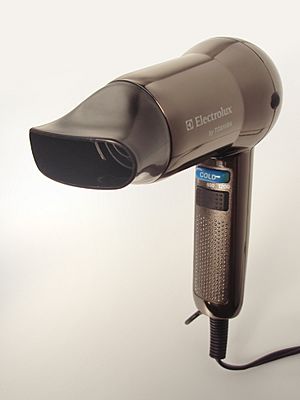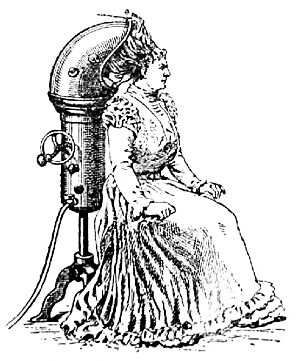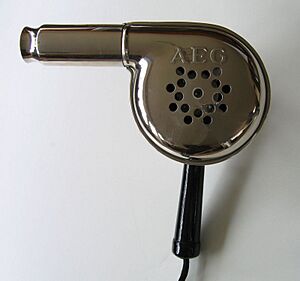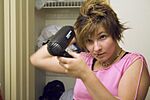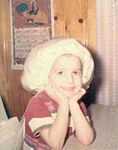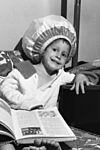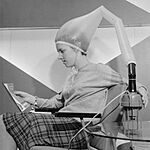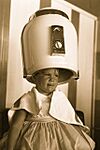Hair dryer facts for kids
A hair dryer is a cool tool that uses warm or hot air to dry and style your hair. You might also hear it called a blow dryer. It helps you control your hair's shape and style. Hair dryers work by speeding up how temporary bonds form in your hair strands. These bonds are strong but disappear when you wash your hair.
Using a hair dryer can give your hairstyle more volume and shape. You can make it even better with styling products, brushes, and combs. Hair dryers were first invented in the late 1800s. The first handheld ones for homes came out around 1920. Today, people use hair dryers at home and professional stylists use them in salons.
Contents
The Story of Hair Dryers
The very first hair dryer was invented in 1888 by a French stylist named Alexandre Godefroy. His invention was huge! It was a large, seated machine with a bonnet that connected to a gas stove's chimney. Godefroy created it for his hair salon in France. It wasn't portable, so people had to sit under it to dry their hair.
An inventor from Armenia, Gabriel Kazanjian, was the first to get a patent for a hair dryer in the United States in 1911. Around 1920, hair dryers started to become handheld. Companies like National Stamping and Electricworks, U.S. Racine Universal Motor Company, and Hamilton Beach Co. made them small enough to hold.
Early Handheld Dryers
Even in the 1920s, these new handheld dryers were quite heavy. They weighed about 2 pounds (1 kg), making them hard to use. They also often got too hot or could even cause electric shocks. Early hair dryers only used about 100 watts of power. This meant it took a long time to dry hair. Today, many dryers use up to 2000 watts!
Since the 1920s, hair dryer development has mostly focused on making them more powerful. They also got new looks and materials. The basic way a dryer works hasn't changed much since it was first invented. One big change was making dryers out of plastic. This made them much lighter. Plastic dryers became popular in the 1960s as better electric motors and plastics were developed. In 1954, GEC changed the design to put the motor inside the dryer's casing.
Different Dryer Styles Emerge
The bonnet dryer was introduced to people in 1951. This type usually came in a small, portable box. A tube connected the box to a bonnet with holes. You would place the bonnet on your head. This design helped to dry your whole head of hair evenly.
The 1950s also saw the arrival of the rigid-hood hair dryer. This is the type you often see in hair salons. It has a hard plastic helmet that fits over a person's head. This dryer works like the bonnet dryer but with much more power.
Making Hair Dryers Safer
In the 1970s, the U.S. Consumer Product Safety Commission (CPSC) created rules for hair dryer safety. Since 1991, the CPSC has required all dryers to have a special safety device called a ground fault circuit interrupter. This device stops the dryer from shocking someone if it gets wet. By the year 2000, deaths from blow dryers dropped to fewer than four people a year. This was a huge improvement from the many accidents that happened in the mid-1900s.
How Hair Dryers Work
Most hair dryers have electric heating coils and a fan. The fan blows air, usually powered by a motor. The part that heats the air is often a coiled wire called nichrome. This wire is wrapped around special insulators. Nichrome is used because it heats up well and doesn't rust easily when hot.
A survey in 2007 showed that many hair dryers now use ceramic heating elements. These are like ceramic heaters. They are popular because they offer "instant heat." This means the dryer heats up faster, and your hair dries more quickly.
Special Features and Attachments
Many dryers have "cool shot" buttons. When you press this button, the heater turns off. Only room-temperature air blows out. This cool air helps to set your hairstyle in place. It can also reduce frizz and make your hair look shinier.
Some dryers also have "ionic" technology. Manufacturers say this feature helps reduce static electricity in your hair. They claim it makes hair "smoother," though people sometimes debate how well it works.
Hair dryers can come with different attachments:
- A diffuser is an attachment for fine, colored, permed, or naturally curly hair. It spreads out the air jet. This stops your hair from being blown around too much while it dries. Your hair dries slower, at a cooler temperature, and with less disturbance. This helps prevent frizz and gives your hair more volume.
- An airflow concentrator does the opposite of a diffuser. It makes the end of the hair dryer narrower. This helps to focus the heat onto one spot, making that area dry quickly.
- The comb nozzle attachment is like an airflow concentrator but has comb-like teeth. This lets you dry your hair with the dryer without needing a separate brush or comb.
Hair dryers have also been found to be helpful in treating head lice.
Different Kinds of Hair Dryers

Today, there are two main types of hair dryers: the handheld dryer and the rigid-hood dryer.
A hood dryer has a hard plastic dome that fits over your head. Hot air blows out through tiny holes inside the dome. This dries your hair evenly. Hood dryers are mostly found in hair salons.
Hair Dryer Brush
A hair dryer brush is also called a "hot air brush" or "round brush hair dryer." It looks like a brush and helps add volume to your hair.
There are two types of round brush hair dryers: rotating and static. Rotating brushes have barrels that spin by themselves. Static brushes do not rotate.
Gallery
See also
 In Spanish: Secador de pelo para niños
In Spanish: Secador de pelo para niños
- Curling iron
- Heat gun


